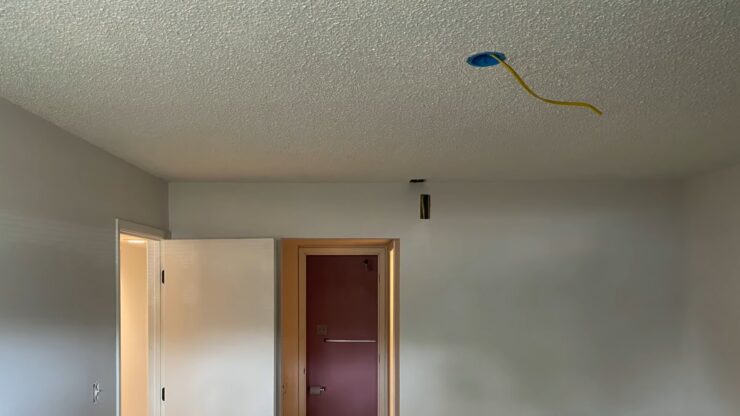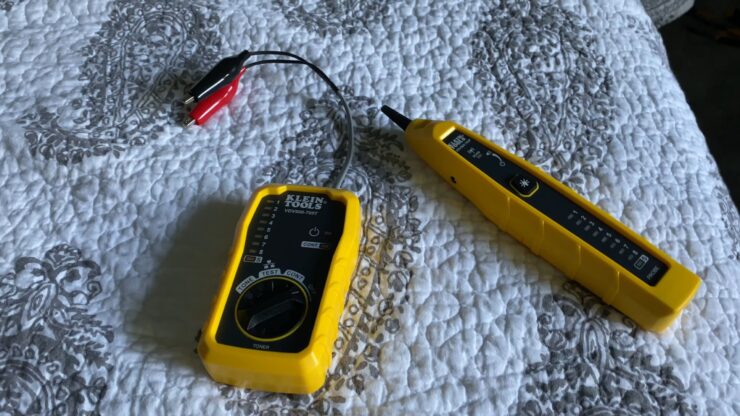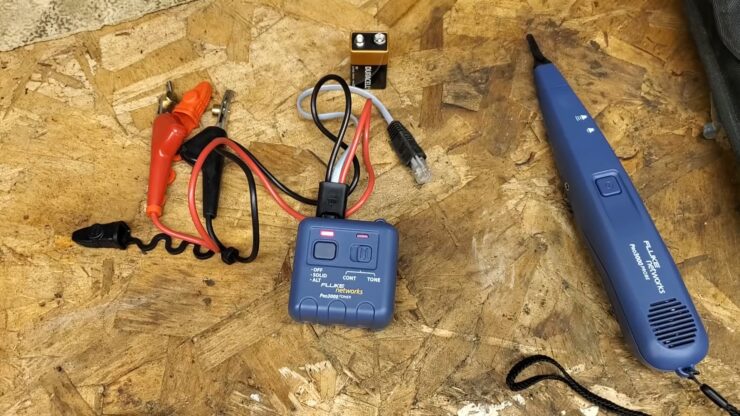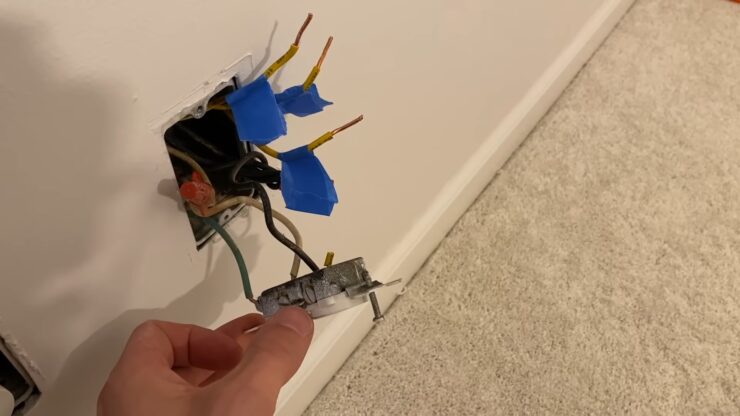Wires play a vital role in electrical installations and house construction. It means if there is any malfunction, it is a must to know how to trace a wire with no power.
Tracing wires secretive or behind walls is not easy. There is a need for a wire tracer to locate the wiring.
Electrical wiring tracing is tricky in the walls, and it needs one to figure out the exact location. It includes finding out the circuit breaker in a non-invasive way, ensuring no wall damage.
Knowing the wires assist in repairing and making the property safer.
Having a blueprint of the electrical wiring is of immense help as a reference. It helps in tracking the problem of the wiring location.
Eventually, it is helpful even if you consider demolition or renovation projects.
How to Trace a Wire with No Power: Let’s Fix the Problems
A wire tracer identifies cables and wires if they are in a group or even when in one connection there are many wires.
Thus, a wire tracer makes life easier and helps to identify wiring and its locations. They also ensure careful and trim connectivity.
Finding a live wire means you require a voltage detector. Only then the job can be done cost-effectively. The tone detectors give a sound and indicate to you if the wire is live or not.
However, if you have an idea of some extensive electrical work requiring tracing of wires, you must look for tools particularly serving the purpose.
They are not expensive and come at affordable prices. It is the reason now all the electrical professionals are having wire tracer with them on their jobs.
Here is the procedure of wire tracing:
Step 1: Purchasing wire tracer
Buy a genuine wire tracer of good quality. It includes all the accessories and components required and offers detailed instructions relating to its operation.
A wire tracer needs to make up of a transmitter, an adaptor, and a probe. It makes the wire tracers system and works to show the required result.
Step 2: Check voltage
Test the source of the voltage power before putting the wire tracer to use. It is because some wire tracers are capable of handling particular voltage.
If they are not appropriate with the voltage, the possibility of a short circuit is high.
Step 3: Make required tests
Carrying out required tests is essential before considering putting to use the wire tracer. It is crucial for the transmitter parts and probe.
It is a must to adjust the probe sensitivity to the optimum level. Put it on and move the probe to the transmitter.
It allows analyzing the resulting effect and the connectivity. It also alerts if you wish battery replacement.
Step 4: Tracing of wire
Once everything is working, you can move out the cable or wire tracing process. Set alligator clips and connect the cable to the transmitter.
The layout depends on the cabling connection type. As it completes, switch the transmitter on and regulate the sensitivity to get the best results.
The tip of the probe has a separate shield to ensure safety. Hold it while testing against the wire and analyze the generated signal onto the transmitter.
You will notice a light or listen to a sound, as per the wire tracer type. It varies with each wire tracer model.
Some have louder and shriller sounds or brighter light as the wire tracer identifies the wires when connected to the transmitter.
Step 5: Testing Continuity
Wire tracers help in checking the wire setup continuity. On setting the connection with the wires, you notice a light or hear a sound after binding the alligator clips.
This light or sound demonstrates continuity. You receive an alert even if there is an interruption.
Ensure to use the wire tracer exactly. It is a delicate procedure to consider wiring and electricity.
It is a must to take precautions and maintain the wire tracer so that there is no misuse or unwanted defects.
What is an Electrical Wire Tracer: the Definition
An electrical wire tracer is useful to pick the wiring-generated signal and the specific electricity line. It reveals by emitting a signal.
Earlier, manual-checkup of breakers, wirings, and technicians were acceptable. It consumed extended hours to identifying the electrical outline and damage.
Fortunately, there is modern technology that is of great relief, making things less complicated. The professionals use this device, and how to trace a wire with no power is ruled out.
It is trouble-free to identify faulty lines using the wire tracer. It also assists in complex electrical connections.
The wire tracer identifies the exact location inside the walls that repairing and making the home safer is convenient.
Planning projects of renovation or improvement of homes using such appliances have made the process of wiring easy.
A wire tracer locates with accuracy the electrical wiring from plastic, wood, non-ferrous and ferrous metals. It is a safe way of testing wall sockets if you are unsure about the output and the cables.
The wire tracer is useful and ideal for safe and quick checks in floors, ceilings, and walls. Thus, safety is ensured even to the person working with electrical wiring.
Wire Tracers Types: the Variations
- Active Tracing
The cables and wires checking are done using wire tracers. Active locating is for people requiring locating pipes and specific lines.
A wire tracer identifies the signal using a receiver and charges electricity specifically.
It does it by emitting a signal or with a direct connection. Some gadgets need direct attachment, and they are placed above a line on the ground.
- Passive Tracing
It refers to charging with electricity a targeted line. A wire tracer picks the signal without the help of a receiver.
But, when there is a group of wires or wire pairs, this wire tracing type does not identify any group or pair. It detects power, and so people can ensure before drilling.
How to Use a Toner to Trace a Wire: The Steps
A toner creates sound energies. It is a device giving out electrical signals in the form of a sound. The sound varies with application.
With the right tools, tracing a wire or wiring is conveniently done without causing any damage to the walls. It is a multipurpose tool carrying out electronic-based tasks.
The steps to use a toner for wire tracing include:
- Step 1: Knowing the device
Using a toner helps in tracing wires. It is used to find out live wiring or even bare wires. Thus, there is a need to consider precautions, then experiencing an electrical shock.
The two functions of toner are that it is the best tool for any electronic equipment testing. It sends informational signals coming in handy to deal with.
- Step 2: Check voltage
Check voltage using the toner. The first is to switch off the toner knob visible on the tool top. Then, begin with looking for the leads and establish contacting the wires.
If you find the LED appears, it indicates the electricity passing and the existence of live wire.
- Step 3: Measure Resistor
Once you ensure to switch off the line, you can conveniently measure the resistor. However, you will notice light wavering as the resistor beholds wavers.
- Step 4: Speaker
The toner allows testing of car speakers as well. Moving to tone setting the device switch, turns off the volume of the speaker and tones down.
- Step 5: DC Circuit
Take wires to contact DC Circuit. Lit LED conveys the wire connection as positive. A negative source is when a green light appears and is connected to the red lead.
- Step 6: Toner
It assists in detecting existing signals. If your speakers fail to work, you may attach the toner to a faulty speaker back. If the device produces sounds, it means the speakers are bad.
- Step 7: Wire tracing
Tracing the origin of wires using a toner is helpful. You can adjust the tone position near the generator and keep beside it the toner. Clipping it to any dead wire helps in identifying the wire path.
- Step 8: Locate brakes
Connecting the wire tool allows wire tracing. In case there is a tone drop, it means the tone generator found a split or crack in the wiring.
- Step 9: Telephone
The toner is useful even in locating telephone lines.
Connect to a telephone jack the device, and turn it on. At the junction box, the toner helps to isolate telephone wires.
- Step 10: Drill Bits
The wall cavity can be found using toner. Drilling a wall clip is enough, and you can hear the exact location of the drill bit.
- Step 11: Plumbing
Using this device identifies the plumbing area. Attach the toner into the water pipe. Clip to the valve handle and try placing it in different locations to understand your requirements.
FAQs for the How to Trace a Wire with no Power
Q1. How much does a wire tracer cost?
Ans: The wire tracer cost may vary between $30 and $40. You can find quality and reliable wire tracers in this range. It is designed specifically for particular situations.
They are accurate and highly effective to trace wiring in the walls or underground. There are expensive wire tracers that cost $50 and more.
They feature a lot of features and come in extra-durable cases.
Q: How do you trace electrical wires in the wall?
Ans: Using an electric wire detector, one can identify the electrical wires exact spot running in the walls. Concentrating on specific areas enables identifying the wires.
A wire tracer is a metal detector type that detects the presence of metallic objects in the walls.
Q: What is the best wire tracer?
Ans: The best wire tracer is the one that comes with a kit. It should include a wire tracer, a circuit breaker finder, an AC voltage detector, and lots more.
It is ideal and efficient in discovering malfunctions in and around the house. The advantage of the best wire tracer is that it quickly locates the circuit breakers and wires.
It is effortless to move with it around, utilize, and also in storing it. It features a LED light, a sensitivity fine-tuning knob, and a perceptible alarm.
Q: How do you trace a bad electrical wire?
Ans: Plug in the circuit, a light, into a dead outlet and turn it on. Keep eyes on the light, while removing the live outlet cover, or wiggle the wire using a wooden stick.
If you find, flickering light, it indicates the switch or the outlet has a loose connection.
Q: How accurate are circuit tracers, and am I doomed?
Ans: Circuit tracers are of varying quality. These involuntary tools are susceptible to reflex breakdowns. There are many brands available.
They do safeguard your house but are not 100% reliable with old fuses.
Q: How to tell which wire is hot if both are black?
Ans: There is a neutral and hot wire if there are two black wires in 120 volts. Checking the voltage of each black wire to the ground is a must.
The hot wire will show 120 volts hot to the ground, while the Neutral to ground wire shows zero.
Q: What happens if I drill into a wire?
Ans: Anything is fine if the power carrying by the cable is not disturbed. It may cut the power and melt if the drill gets into the wire, or it may set fire, turning to be hazardous.
Q: How do I know if my house has an electrical fault?
Ans: One can come to know about electrical faults in their homes with these:
- Funny or unfamiliar odors
- Hot ceiling fixtures
- Arc faults
- Loose outlets and broken light switches
- Counterfeit electrical products
- Flickering lights
- Sparkling or warm switches and outlets
- Buzzing sounds
Conclusion
A wire tracer is a handy device ensuring safety in identifying wires that are underground or behind walls.
These devices are consistent and uncomplicated to use. There is a need to store them properly to be useful for professional applications and DIY purposes.
Checking the wire tracker voltage power is mandatory. Mainly because if the voltage is higher, the tool can endure, it may cause a short circuit and give inaccurate results.
How to trace a wire with no power is no more a problem. Performing necessary tests help. Set the sensitivity of the probe to maximum and move it near the transmitter.
A toner of good quality should alert of issues and check the connectivity. People on a tight budget may find inexpensive wire trackers to deal with their electrical jobs.
The wire tracker’s price fluctuates as per its rationale or functions. There are cheap trackers available to detect occasional wiring and for household purposes.
However, for professional-grade, look for the best tracker.





